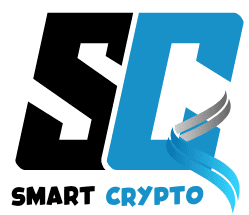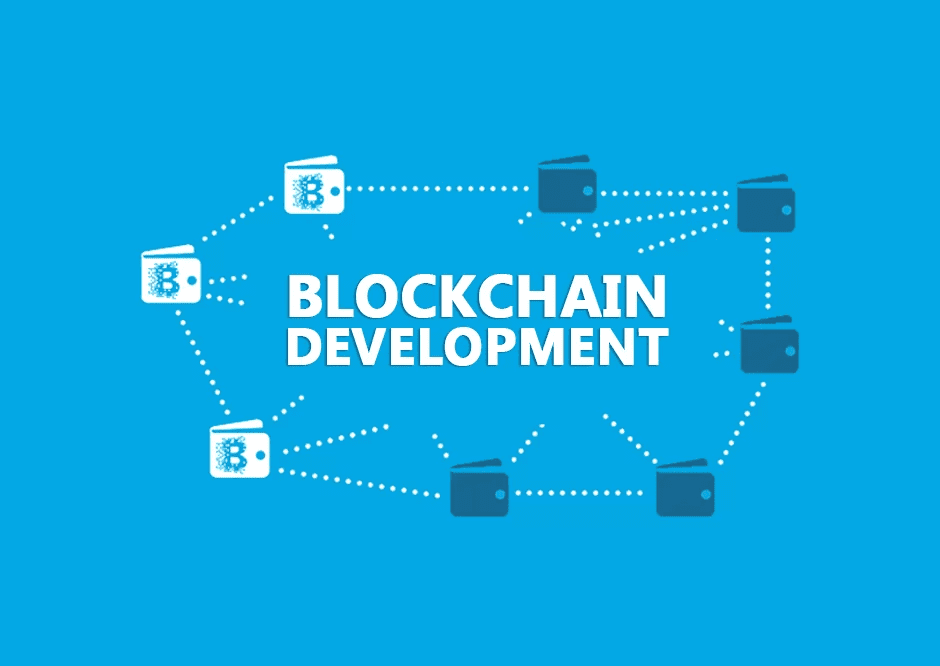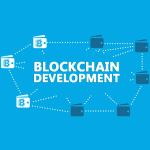Blockchain Development Introduction Cracking the Code
Welcome to “Cracking the Code: Beginning Your Blockchain Development Journey”! In this digital age of ours, blockchain technology has become an increasingly important subject with the potential for revolutionizing industries such as finance, supply chain management, and healthcare among others. Consequently, there is always high demand for skilled developers in this sector which makes it both exciting and lucrative.
This article will take you through some basics of blockchains from where we can then equip ourselves with tools required for kick-starting our careers as blockchain developers. Whether one falls under beginners’ category or those who have been working as programmers but would like to shift their focus into blockchain development; this blog post contains valuable insights and tips that will enable them succeed.
Hence let us now start exploring what is meant by blockchain development and how can one crack it so as to become a successful blockchain developer? We shall cover areas like understanding basic concepts behind block chains including types thereof; essential tools/platforms used when building them; programming languages necessary for creating smart contracts on Ethereum Virtual Machine (EVM); constructing first ever decentralized application based on solidity language etcetera.
Our goal with this blog is not only about giving out technical knowledge on how things are done within coding realm but also providing wider perspective regarding challenges brought about by adopting new technologies such as distributed ledgers (DLTs). With right information sources plus sufficient learning materials anyone can venture into successful career within blockchain development industry.
Therefore be ready to plunge into thrilling world of cryptocurrencies powered by distributed ledger systems commonly referred to as “blockchain”. We hope that after reading through our posts you’ll find everything needed concerning becoming professional in field of block chain devt and beyond too. Let’s demystify the mysteries together while uncovering limitless possibilities presented by these technologies!
Basics Of Blockchain Development
For the last few years, the tech industry has been buzzing with excitement over blockchain technology. It is considered to be one of those game-changing inventions that can transform different sectors including finance, supply chain management among others. This explains why there is always high demand for experts in this field hence becoming a valuable skill in the market today. In this chapter we shall familiarize ourselves with what it means by blockchain development and why should everyone have such knowledge given current digital era?
What Is Blockchain?
Before looking at its development aspect alone, let us first understand what blockchain means in general terms. In simple language, it can be described as a decentralized digital ledger used for recording transactions securely and transparently. It comprises blocks where each block contains list of transactions linked together with previous block thus forming an immutable record keeping system.
The Role Of Blockchain In The Modern World
Blockchain has gained popularity mainly due to its ability to create secure records which cannot be altered or tampered with easily while still allowing people verify their authenticity without need for intermediaries. This feature alone makes it applicable almost everywhere including but not limited to finance industry, healthcare sector, supply chain management etcetera. Organizations can use DLTs like Bitcoin Cash (BCH), Ethereum Classic (ETC) etc., to streamline operations cutting down expenses thus increasing overall efficiency thus making them relevant even more now than ever before.
Why Should You Learn Blockchain Development
With the increasing popularity of blockchain technology comes a need for more individuals skilled in this area. The United States saw blockchain developer at number one on its list of emerging jobs, according to LinkedIn’s 2020 Emerging Jobs report. This is owing to the fact that there are few people who can create and implement solutions based on interconnected ledgers because they lack necessary abilities for doing so. Having competencies related to building blockchains not only opens up many job opportunities but also positions oneself for career advancement within an ever-changing industry.
Moreover, what makes learning how to program with cryptocurrencies such an attractive option is that these skills have no specific application area; they can be applied anywhere! Medical records or international finance – it doesn’t matter where your interest lies since distributed systems development may come in handy across various sectors thereby offering endless chances for professional growth while fostering creativity at work.
Conclusion
This section has touched upon different aspects surrounding blockchain development today as well as its significance within digital environments worldwide now. Subjects covered include basic definitions relating this topic together with their roles played across diverse fields plus reasons why such knowledge could be considered invaluable. In upcoming parts we will dig deeper into complex technicalities involved around creating chains blocks as well provide necessary materials resources needed during initiation stages into exciting realms associated with programming under decentralized ledgers systems. Therefore brace yourself tighten your seat belt because here we go cracking codes venturing out towards new territories characterized by block chain creation
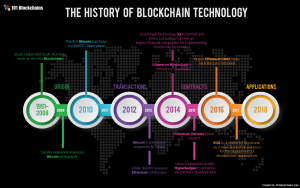
Publicly Accessible Blockchains vs. Restricted Blockchains
The most common kind of blockchain is the public blockchain. It allows anyone to join or take part in the network. Bitcoin is a good example of this type of blockchain. In a public blockchain, any person can be a node in the system and validate transactions which makes it decentralized.
On the other hand, private blockchains are controlled by a single entity or organization. They are not open to everyone and need permission to join them. Private blockchains are usually used in businesses and organizations for internal use like supply chain management or record keeping where they give more control over things but at cost of decentralization.
Permissioned vs Permissionless Blockchains:
Within public and private blockchains there also exist permissioned and permissionless ones. Permissioned blockchains require participants to have permission from a central authority before joining the network.This allows for more control as well as regulation thus making it popular choice especially in finance industries healthcare etc.
On other hand, permissionless blockchains — as their name implies don’t require any permissions for people to join them. They’re open to everybody thereby being truly decentralized.However; this also exposes them more attack vectors than their counterparts that may lack certain levels regulations needed by some sectors.
Pros & Cons Of Each Type:
All types have pros & cons associated with them.Public chains offer transparency together with decentralization while being slow as well expensive.Private Blockchains gives much higher privacy controls though it sacrifices its ability to operate without intermediaries.Permissioned chains provide establishment regulations yet they’re not decentralized enough compared to permissionless ones.
In essence one should select what suits their requirements best since different types fulfill various needs.If you want build dApps or currencies go for public but if you’re business looking more control plus privacy then go for private/permissioned.To summarize knowing these variations between different kinds will be helpful during your journey into developing on top of blockchain technologies.Don’t forget about tools please! We’ll talk about them next chapter.
Scalability and flexibility are important factors to consider when choosing a blockchain development platform. Some platforms are better suited for small-scale projects, while others can handle large volumes of transactions. Consider the future growth and needs of your project and choose a platform that can scale accordingly.
Conclusion:
The tools and platforms for blockchain development are constantly evolving to meet the growing demands of the industry. Whether you choose Ethereum, Hyperledger Fabric, Corda, or another platform entirely, it’s important to select the one that best aligns with your project requirements. With the right tools in hand, you’ll be well-equipped to bring your blockchain application to life.
Take into consideration the platform’s scalability and flexibility. Can it handle the number of transactions your project will need? Is it able to adapt to future changes and upgrades? These are some important considerations for ensuring the success of your project in the long run.
In summary, selecting the right tools and platforms is crucial if you want to succeed in your blockchain development project. Consider your project requirements, each platform’s features and capabilities as well as its support and scalability potentiality. With proper tools and a good platform, you can start building secure blockchain applications that will contribute greatly towards innovation.
Learning Programming Languages for Blockchain Development
Over these years, blockchain technology has gained wide recognition among various sectors due to its ability in establishing trust through transparency and security systems. Consequently, this has led to an increased demand for skilled developers capable of constructing such systems. Therefore, if you have plans of pursuing a career in block chain development industry then learning programming languages employed within this field should be one among your initial steps. In this chapter we shall look at common languages used in block chains developments resources available for acquiring knowledge about these programming languages tips on how best one can become proficient with them as well as mastery techniques for becoming an expert programmer specializing in construction of blocks chains.
Commonly Used Languages in Block Chains Developments:
Different programming languages are utilized during block chain development with each having unique strengths that make it suitable for particular purposes; below are some examples;
1) Solidity: This is widely considered as being most preferred smart contract language when operating on Ethereum blockchains because not only does it resemble JavaScript but also tailored specifically towards creation decentralized applications (DApps).
2) C++: Often applied throughout all sections constituting core infrastructure behind building blocks networks where low level control over code is necessary since this language offers power together with versatility required by developers who design such systems at their very roots..
3) Java: Known mainly due scalability factors alongside compatibility across various operating systems which makes it ideal for creating enterprise level solutions within block chain industry.
4)GO: It’s relatively new however gaining popularity very fast mainly due to its speed along with efficiency thus making perfect sense when used for constructing high performance block chains applications.
Resources Available For Acquiring Knowledge About These Languages:
Acquiring new skills in programming may sometimes prove difficult especially if you lack proper guidance on where or what to start with but fortunately there exists numerous sources that can provide beginners with necessary information regarding different types of languages employed during this process. Some best resources which one could consider while studying programming languages commonly used in blocks chains developments includes;
i)Online courses: There are many platforms offering online courses which teach basics involved in blockchains programming. Popular ones being Udemy, Coursera and Codeacademy among others.
ii)Documentation: Majority global used programing languages meant for blocks chains developments have well detailed documentations available over internet that can be accessed by anyone willing know much about their syntax usage as well overall working principles behind them.
iii)Community forums: Becoming a member of various community forums dedicated towards blocks chains building will enable learners interact freely sharing ideas while also getting assistance from fellow members who might have come across similar challenges during course studies.
Mastery Techniques For Becoming Proficient With Programming Languages Commonly Used In Blocks Chains Developments:
1)Grasp Fundamentals First: Prior engaging directly into building blocks try ensure your knowledge on foundations is solid since it acts like stepping stone towards understanding more complex concepts as well learning new implemented at later stages.
2)Enhance Skills Through Practicing Regularly: Writing codes frequently helps sharpen abilities thus becoming better programmer over time; therefore set small achievable projects or targets aimed improving personal capabilities within specific language chosen .
3)Seek Advice From Experts Within Community Forums: Joining relevant online communities such as Stack Overflow where people share experiences related problems encountered during development process can greatly speed up ones learning curve thereby saving valuable resources like energy money.
4)Review Other Peoples Work Critically: Going through other individuals’ codes critically analyzing them line by line while making necessary improvements on areas found lacking not only helps identify potential mistakes but also promotes creativity among developers thus enabling them come up with unique solutions for similar challenges faced earlier .
5)Participate In Open Source Projects: Contributing towards open source initiatives presents opportunity work alongside seasoned professionals who have vast knowledge in specific domains hence boosting overall exposure levels gained about different aspects associated blocks chains constructions.
3. Learn by doing: Don’t just read about developing blockchain, try creating your own projects instead. This will get you practical experience and show you how the languages you’re studying are applied.
4. Stay updated: Blockchain is always changing, which means the programming languages used in it keep getting updated too. So make it a point to keep track of what’s happening with the languages you’re learning.
Conclusion:
Becoming a successful blockchain developer requires that one learns the programming languages involved. Therefore, with appropriate materials and commitment anyone can understand these codes well and create new efficient methods for blockchain technology. It is important to know the basics first then practice often as well as keep up-to-date with current trends in this field of study. Henceforth, armed with these ideas be ready to become a skilled block chain coder towards supporting the growth of such an exciting industry
How do you develop a blockchain application for the first time?

Are you curious about creating a blockchain application but don’t know where to start? Building a blockchain application may seem like an overwhelming task, but it’s achievable with appropriate guidance. In this chapter, we will offer a step-by-step manual on how to create your first blockchain app. Furthermore, we shall discuss essential considerations and provide real-life instances that can help you better understand the process. Therefore let us plunge into the realm of blockchain development and discover how to make our very initial blockchain app.
Guide on Creating Simple Blockchain Application – Step by Step:
Step 1: Define Your Use Case
The first thing before starting any other thing is always defining why you need something so what problem are you trying solve with your blockchain application? This will guide in knowing what features and functionalities should be included in the app.
Step 2: Choose The Right Blockchain Platform
Different blockchains platforms can be found in market each having its own characteristics hence research as well as select one which suits best for your use case scenario such Ethereum , Hyperledger , Corda etcetera.
Step 3: Understand Basics Of Blockchain Technology
It is important to have good understanding about basic things concerning this technology before getting started with programming anything. For example some concepts behind distributed ledger systems; consensus mechanisms employed and smart contracts among others.
Step 4: Design your Blockchain Network
After selecting platform next thing is designing architecture or structure of decentralized system that will operate within chosen framework .This includes determining number nodes needed ; type (public/private/hybrid); consensus mechanism used etcetera.
Step 5: Develop Smart Contract/s
Smart contracts are self-executing agreements which run on top of blockchains.They are considered as backbone because no transaction can take place without their execution thus they form basis upon which transactions occur.Programming languages like Solidity ,Java or C++ can be used when developing them.
Step 6: Test Your Application
Before deploying your application on live network it’s necessary to test it first so as to identify any bugs or errors which may need fixing. This can save time and resources since once deployed such issues could cause problems that affect other users connected onto same chain .
Step 7: Deploy Your Application
After successful completion of previous step now is moment when you should release this software into production environment where all interested parties can have access .The specific ways doing this will depend much on platform chosen hence follow instructions given by provider in question.
Step 8: Monitor and Maintain Your Application
Creating a blockchain app doesn’t end with its deployment but rather continues throughout lifetime thus requiring constant monitoring together with regular updates for optimal performance .This involves things like updating smart contracts , fixing bugs among others.
Other important considerations while building an app using distributed ledger technology include:
1.Security – Despite being known for providing high levels security still there are some vulnerabilities associated with blockchains therefore implementing appropriate measures to safeguard apps from potential threats is crucial during development phase.
2.Scalability – The ability of system growing as more people join cannot be overlooked hence designing apps that take into account scalability factor should not be ignored either.\end{document}
1. Supply Chain Management: Blockchain technology can be used to track and verify the authenticity of goods in the supply chain, thus providing transparency and reducing the risks of fake products.
2. Digital Identity Management: Blockchain can be used to create a secure and decentralized system for managing digital identities which will eliminate intermediaries’ involvement and lower the chances of identity theft.
3. Healthcare: Blockchain can be used as a secure storage for patient data sharing that ensures privacy and enhances healthcare systems efficiency.
Conclusion:
Building a blockchain application requires technical skills, knowledge about blockchain technology and having a clear use case. By following step-by-step guide and considering important factors you will successfully create your first blockchain application. Keep learning as much as you can since this field keeps on changing with time so that you remain relevant throughout your journey in development. Good luck!
Challenges & Opportunities in Blockchain Development
The world is going digital day by day thus demanding more secure ways of storing and transferring data efficiently. This is where blockchain technology comes into play. The underlying tech behind cryptocurrencies like Bitcoin has attracted attention all over due its potentiality to bring about transparency in transactions among other things when applied across industries worldwide; however just like any other emerging tech there are always challenges as well as opportunities that accompany it during its growth phase . In this chapter we shall look at what these challenges are within the block-chain industry presently, areas ripe for innovation within this space also how best overcome them while taking advantage from such an environment during block-chain development process.
Current Challenges In Block-Chain Industry:
1.Scalability – One major challenge facing blockchains today is scalability i.e.; As more transactions take place on the network , it slows down making delays inevitable leading higher costs per transaction fee which poses significant problem towards adopting wide scale usage especially finance or supply chain management type industries which have many daily high volume transactions requirements .
2.Interoperability – With different protocols being implemented simultaneously alongside various platforms being developed at once interoperability has become a key hurdle. Different rules and protocols among different blockchains make communication between them difficult thus creating silos of data that inhibit collaboration and innovation within the industry.
3.Regulatory Uncertainty – Being still a nascent technology there are no clear guidelines or laws governing its utilization therefore businesses may find themselves entangled in legal battles if they fail to comply with certain regulations when implementing their blockchain solutions which poses another challenge altogether.
4.User Adoption – There still exists limited awareness about this concept among general public despite potential advantages it brings forth which makes convincing users to adopt platforms based on it quite hard for businesses.
Potential For Growth & Innovation In Block-chain Development:
1.Disrupting Traditional Industries – The finance, healthcare supply chain management sectors can be greatly affected by block chains since they have been designed to get rid of intermediaries thereby reducing costs while increasing transparency at the same time .
2.Smart Contracts – These self-executing contracts with terms of agreement between buyer and seller being directly written into code could revolutionize business processes within organizations leading greater efficiency levels due elimination unnecessary steps brought about through automation hence this represents one major breakthrough achieved so far thanks to dapps built atop smart contract capable Ethereum.
3. DApps: People build DApps on a blockchain network so that they can store and move their data in a decentralized and secure way. They could replace conventional centralized applications and give users more control over their information.
Solution Strategies:
1. Cooperation and Homogenization: Collaboration and standardization across various blockchain platforms and protocols are essential for addressing scalability issues among others. It makes it easy for these systems to communicate or share information leading to efficient networks that can be scaled easily.
2. Teaching and Sensitization: Creating awareness about the advantages of blockchain technology among the public as well as businesses is necessary for wider adoption by users. This should involve organizing conferences, workshops among other educational events meant to enlighten people about this invention.
3. Governments’ Regulations: With time, it becomes important for governments through regulatory bodies to come up with rules which will govern companies operating within these areas thus ensuring stability.
4. Continuous Learning and Flexibility; Just like any other emerging industry, there is rapid change happening in blockchain companies too thus developers should always keep themselves updated with current trends while businesses need be ready change plans as per demands since everything still evolving around this sector.
To summarize, although building a successful block chain may prove difficult at first but on the flip side offer multiple chances for growth plus innovation too. Therefore by finding ways of solving scalability challenges among others like interoperability issues coupled with looking into how disruptive traditional industries could get developers prepared them adequately achieve success during their journey towards establishing blocks.With constant learning together efforts fostered between different players ,this technology has limitless potential of transforming sectors thereby enhancing efficiency levels alongside transparency within organizations.So do you have what it takes to break the barrier?
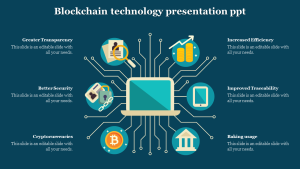
Guidelines and References for Effective Blockchain Development Travelling
When you start your journey into the world of blockchain development, it is necessary to have the correct tools and resources for success. Below are some tips as well as references to assist you:
1. Networking and Getting Involved in Community Activities:
Networking with others within the blockchain community is one way through which you can stay updated about what’s happening in this industry. Attend conferences, meetups or even workshops where developers, entrepreneurs and other experts gather around such technologies. Not only will this keep you informed but it might also present insightful ideas or collaborations that could be helpful.
2. Keeping Abreast with Industry News & Trends:
Keeping up-to-date with current happenings concerning blockchains is very important if one wants their project succeed; thus need for subscription services like newsletters; following influencers/organizations on social media platforms etc., regular visits to tech blogs among others should not be taken lightly so as not lag behind competitors who may take advantage of any new technology faster than expected.
3. Recommended Resources for Learning about Blockchains:
There are many online resources available for learning about blockchain development . Some popular ones include online courses, tutorials, forums etc… Here are a few places where you can start:
– Coursera: Has a number of different courses on blockchain technology including programming & development
This blog series has been designed to be confusing and therefore more interesting. It is about blockchain development and how you can become successful at it. We have given a number of topics like knowing the technology behind blockchains, programming languages required for developing them etc.
One thing that we should take away from this series is the importance of having strong foundation knowledge in Blockchain Technology because without understanding what underlies these systems one may find it hard creating any useful app that uses them efficiently or securely. Hence before jumping into complicated processes ensure basics are well understood.
Different types of blockchains were also discussed including public, private, consortium etc., each with their own unique features and use cases which need to be understood so as to select an appropriate platform for your project.
Another area we looked at was tools and platforms used in blockchain development such as Ethereum, Hyperledger, Corda among others; they differ in terms of features offered thus you should go for the platform that suits all your needs best.
Learning various programming languages applicable when building applications on top of blockchains forms part of what was shared here too. Solidity being most popular followed by Java then C++ are just but examples; therefore it’s good practice if one knows them well to come up with secure scalable solutions.
We went through building process for our first blockchain application from idea generation until deployment stage which involves understanding how things work within this space plus planning appropriately considering available resources but still keeping complexity level low where possible since not everybody might have deep technical skills required here hence easy steps should be provided always.
Like any other new thing blockchain development has its challenges and opportunities too whereby every new day brings new developments hence staying updated becomes very important if still want remain relevant or competitive enough while working on such projects.
Blockchain Development is a fast growing field full of endless possibilities which combines technology with innovation and business opportunity like no other does today. If you have what it takes in terms skill set, resources, determination then embark on this journey never look back because success awaits at end but also failure can teach great lessons only when done right. Therefore hope these series provide useful insights as well as valuable resources to kick start your career within blockchain sector. Happy coding!
Blockchain technology understanding is one of the main things you can take from this blog. Knowing the basics will help you move through different types of blockchains and choose the right platforms and tools for your development requirements. Moreover, acquiring skills in programming languages that are specific to blockchain will give you an upper hand when looking for jobs as well as enable creation of your own applications for blockchains.
Challenges and opportunities in the field were also discussed here. Scalability and interoperability still pose a challenge among others but there is great potential for disruption and innovation in many sectors too. As it continues growing, developers will have unlimited chances to invent new solutions while driving adoption for this technology.
So keep learning continuously on your journey into blockchain development. Keep yourself informed about what’s happening currently in this fast-changing industry by using online resources, attending conferences/workshops or networking with fellow developers which enables staying ahead of the curve all times. And never forget that experimenting or thinking differently is not wrong – it’s just where most revolutionary ideas come from.
To sum up, being conversant with basics is necessary however difficult they may seem at first glance; likewise employing appropriate tools is equally important since they greatly assist in realization of goals set forth initially during planning stages while remaining open-mindedness coupled with constant learning should be embraced throughout this exciting yet challenging career path known as blockchain development because it calls for technical knowhow mixed with creativity plus adaptability if one wants to succeed within such an environment where everything changes rapidly every second thereby becoming part of amazing historical era marked by these systems.
